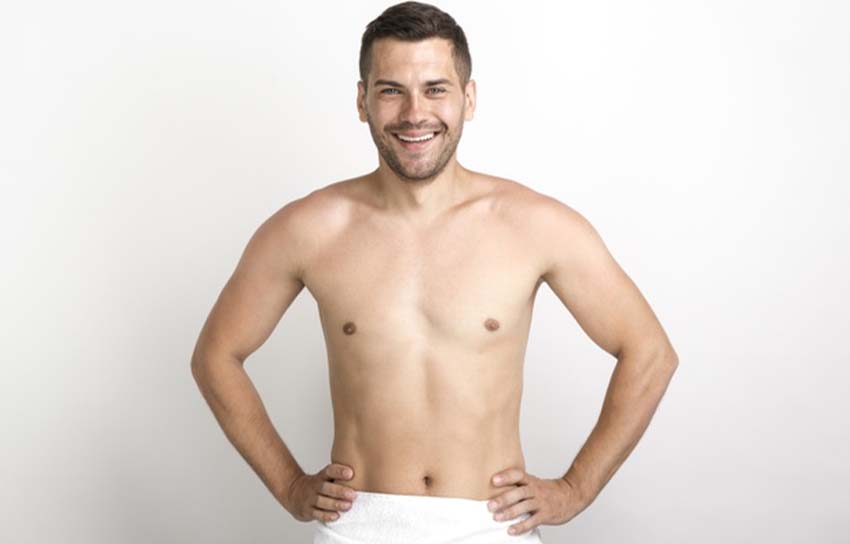HOW TO GET RID OF GYNECOMASTIA - MALE BREAST

Types of Gynecomastia
Gynecomastia or breast hypertrophy is of two types.
1. True gynecomastia
True gynecomastia in which the glandular tissues are enlarged
2. Pseudo gynecomastia
Pseudo gynecomastia in which fat develops due to the deposition of fat in the area of the breasts.
Male breast reduction surgery
Enlarged male breasts can cause emotional discomfort and impair self-confidence. Many individuals suffer from this problem during puberty.
If one is uncomfortable and conscious about the appearance of enlarged breasts then male breast reduction surgery is the best option to consider, to get immediate improvement with minimal scarring. The surgery removes excess fat, glandular tissue to help achieve a flatter, firmer, and more masculine chest contour.
Gynecomastia isn't a serious problem, but males often find it tough to cope with this condition. The male breast reduction surgery is an outpatient procedure and one can go home the same day after the surgery.
Procedure of Gynecomastia surgery
The doctor will check medical and drug history. A physical examination will be conducted and evaluation of the breast tissue, genitals, and abdomen will be done. Mammograms, blood tests, CT scans, MRI scans, and testicular ultrasound tests will be conducted to determine the cause of gynecomastia. The goal of gynecomastia is to restore normal male breast contour and correct the deformities of nipple, breast, and areola. Surgical options include liposuction, excision, and the combination of both approaches. The surgery is completed within 1-2 hours, and the patient is discharged on the same day.
- The area to be treated is completely sterilized, and the targeted area is marked.
- General anesthesia or intravenous sedation is administered to comfort the patient during the surgical procedure.
- The liposuction technique is used to remove the excess fatty tissue, and this requires cannula insertion, therefore incisions. In Grade-I gynecomastia, the areolar incision may not be needed.
- The cannula is moved back and forth and fat is removed by vacuum suction.
- The length of the incision will be based on patient anatomy.
- Excision technique is recommended to remove excess skin. In some cases the nipple will be repositioned to achieve a more natural contour.
- The combination of liposuction and removal of the excess gland is done to achieve a smooth flat chest appearance.
- The incisions are closed at the end of the treatment.
- The patient wears a compression garment after the surgery as directed by the surgeon.
Results
- Results are instantaneous and long-lasting
- Provides masculine chest contour and better proportioned upper body
- Enhances self-image
- Gives flatter and firmer chest.
- Post surgery swelling will resolve in a few days, and incision lines will fade over time.
Precautions after surgery
- Intake regular healthy meals and drink plenty of water.
- Don’t consume alcohol for about 2-3 weeks after the surgery.
- Take proper rest and sleep straight.
- Always wear the compression garment as it helps to reduce swelling and bruising and will improve the aesthetic outcome.
- Don’t intake any blood thinning medications before and after the surgery. Maintain proper hygiene and clean the incisions with clean water daily. Apply antibiotic ointment and cover them with dressings.
- Maintain proper weight to achieve optimum results.
Source:Dr Ritu Singh